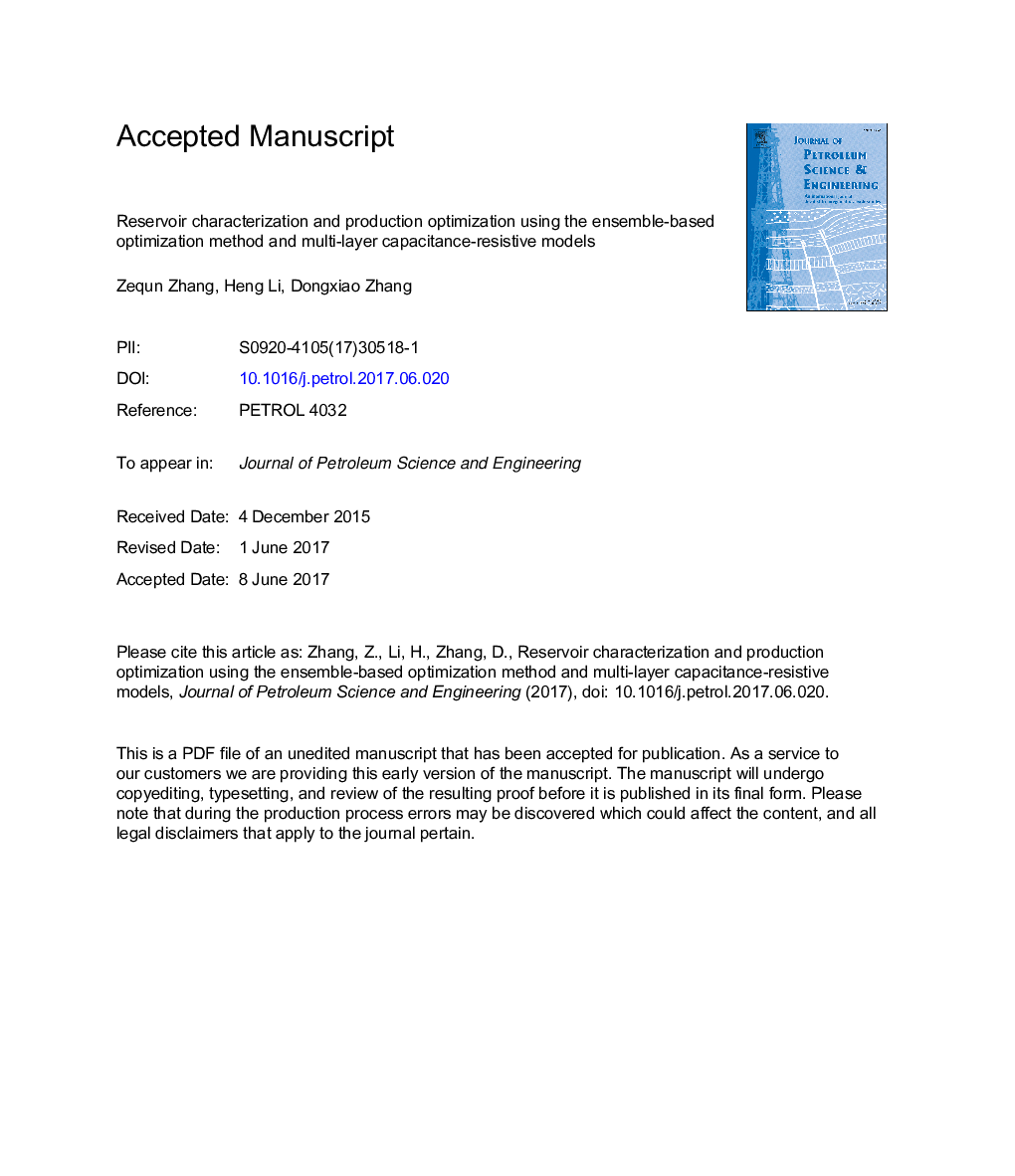| Article ID | Journal | Published Year | Pages | File Type |
|---|---|---|---|---|
| 5484140 | Journal of Petroleum Science and Engineering | 2017 | 50 Pages |
Abstract
Multi-Layer Capacitance-Resistive Models (ML-CRMs), unlike the Capacitance-Resistive Model (CRM), can be applied for water flooding performance prediction in a layered reservoir. The ensemble Kalman filter (EnKF) method is applied to match the parameters in ML-CRMs based on a historical production process for each layer. A methodology for maximizing production and financial gain is presented that bases the ensemble-based optimization (EnOpt) method upon the ML-CRMs as the underlying dynamical system. This allows the utilization of historical observation data to characterize and predict the layered reservoir response and further use them to control the injection and production wells to maximize financial gain from the reservoir. The EnOpt method enables the incorporation of nonlinear effects in the ML-CRMs description. Combining the EnOpt method with ML-CRMs (an approximate model), rather than reservoir simulations, is computationally efficient. This can be helpful in cases with scarce geological data or a reservoir that involves a large number of active wells. Synthetic examples of a layered reservoir are performed to validate how EnOpt/ML-CRMs can successfully match observation data with good forecasting and optimization ability.
Related Topics
Physical Sciences and Engineering
Earth and Planetary Sciences
Economic Geology
Authors
Zequn Zhang, Heng Li, Dongxiao Zhang,
